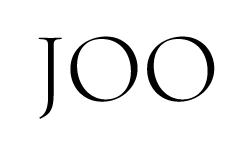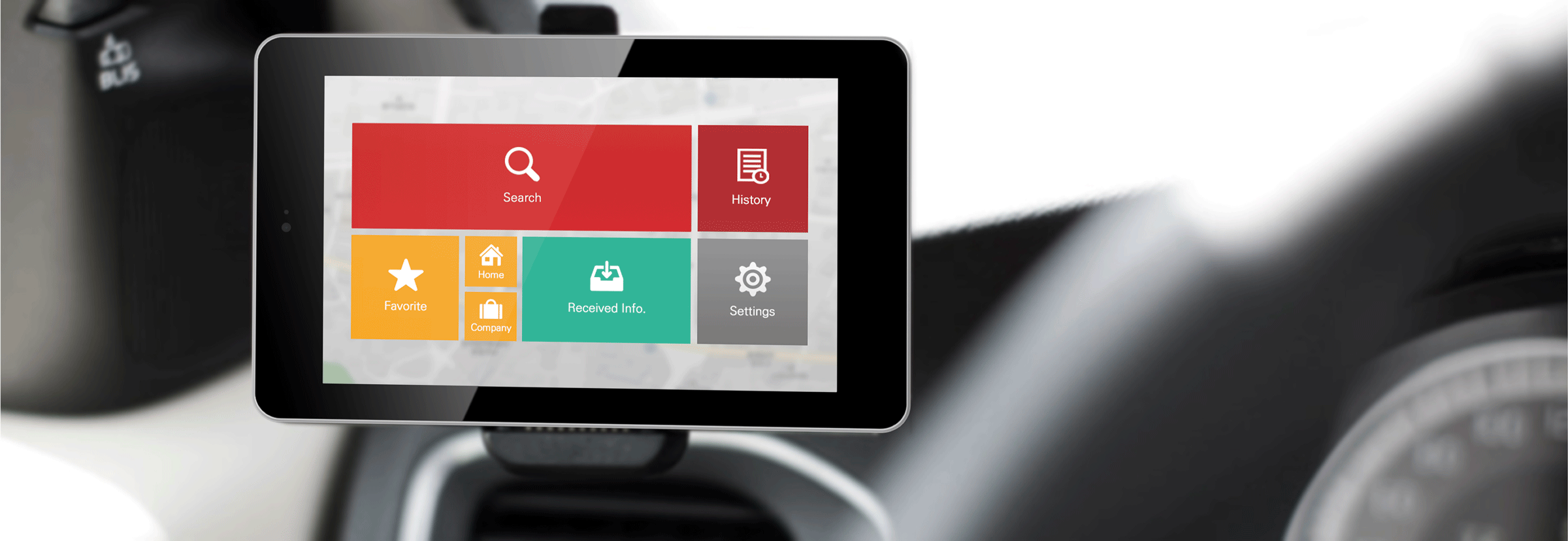
Car Navigation Concept Design
New Features Suggestions for A Car Navigation system to Better Reflect Drivers’ Expectations
Finding a route in driving is indeed a big hassle that can be frustrating. Navigation offerings have allowed us to reduce the difficulty, but still, there is some inconvenience resulting from low usability. It is common that drivers feel frustrated because its interface seems not user-friendly. Thus, I delved into a design-combined solution to resolve the ambiguity of navigation.
Category
Academic / Teamwork
Type
UX/UI
Scale
7 inch (1280x800px)
Period
Mar. 2014 – Oct. 2014
What I did
Research, Analysis, Design Direction, Concept Design
Worked with
Eunsun Joo, Wonsik Moon
Supervisor
Eunjong Lee
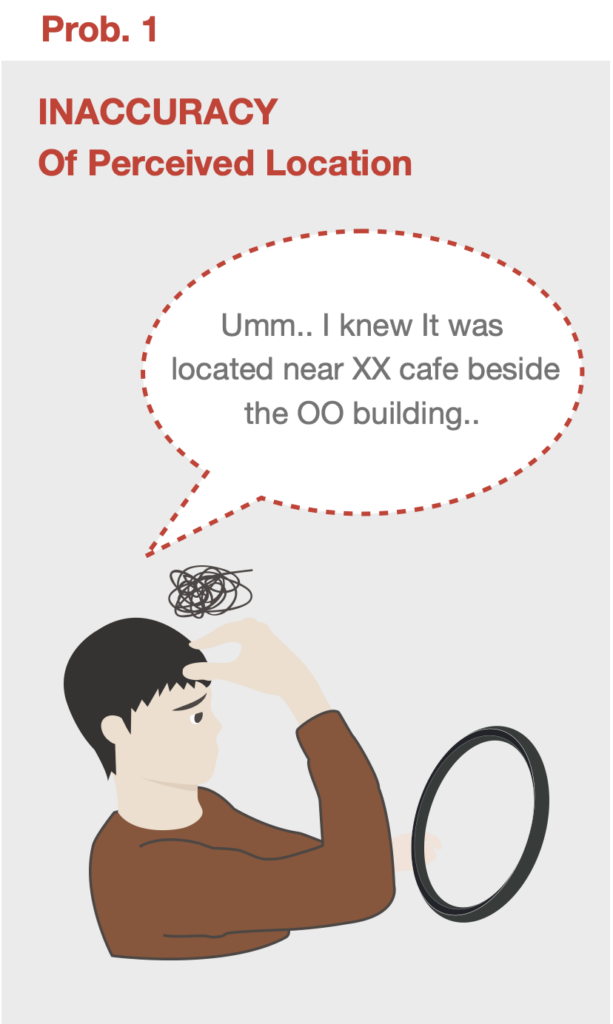
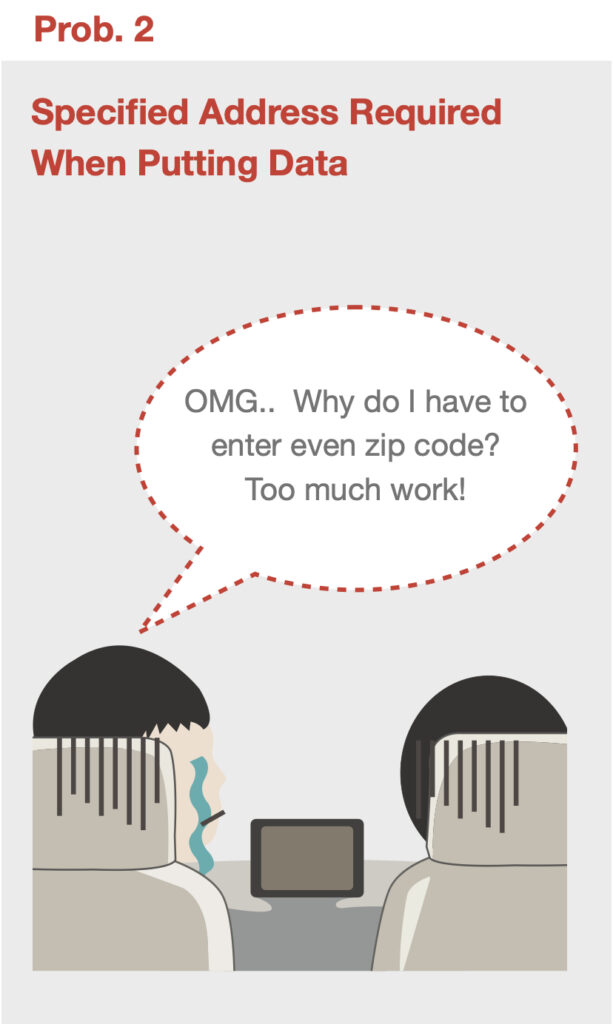
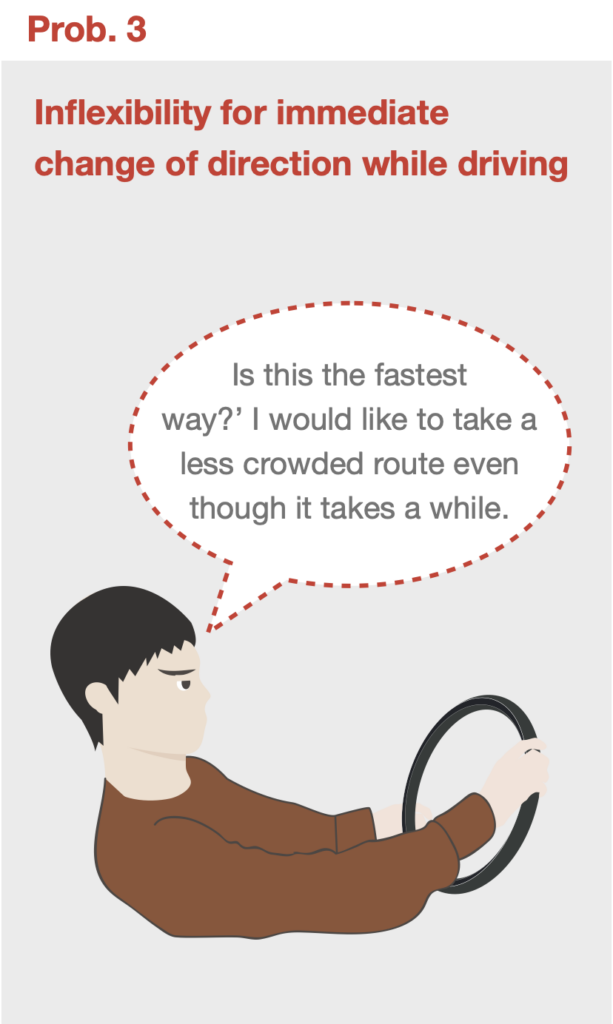
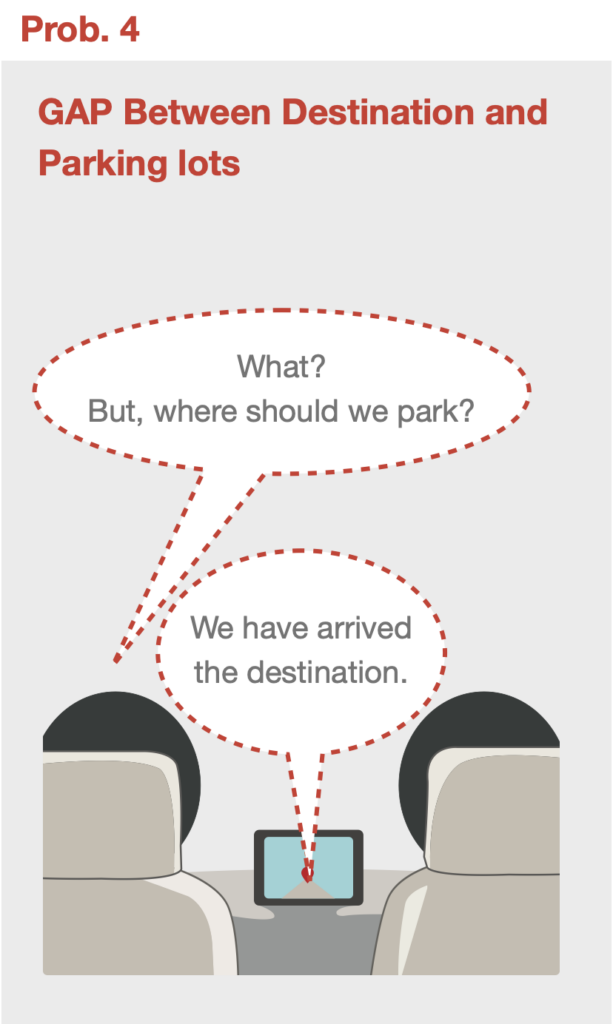
Pre-Research
In order to get a grip on how navigation operates, segmenting driving sequences was the first step. The second step was to apprehend elements to be considered when searching for a route and to establish a complete set by calculating a number of cases. Lastly, we drew key problems.

Research Framework
we deduced three points as a framework in the sequence of driving: how accurately the drivers find the destination, how they find information on a navigator, and how they perceive and utilize the user interface of the navigator.
Driver’s expectancy
on route search
- Driver’s preconception
about a device - A reason for a lack of credibility in the device
How drivers approach to route from navigation
- The process to gain information about the destination
- Criteria and factors that influence judgment when searching for routes
- Primary factors to cause irritation while driving
- Parking issues in the choice of a route
UI structure and Interaction flow
- In-vehicle physical circumstances
- A way to display informationized route data to drivers
- Disconnections between intended functions and practical experiences (naming & grouping per menu classification structures)
Primary Research
Persona
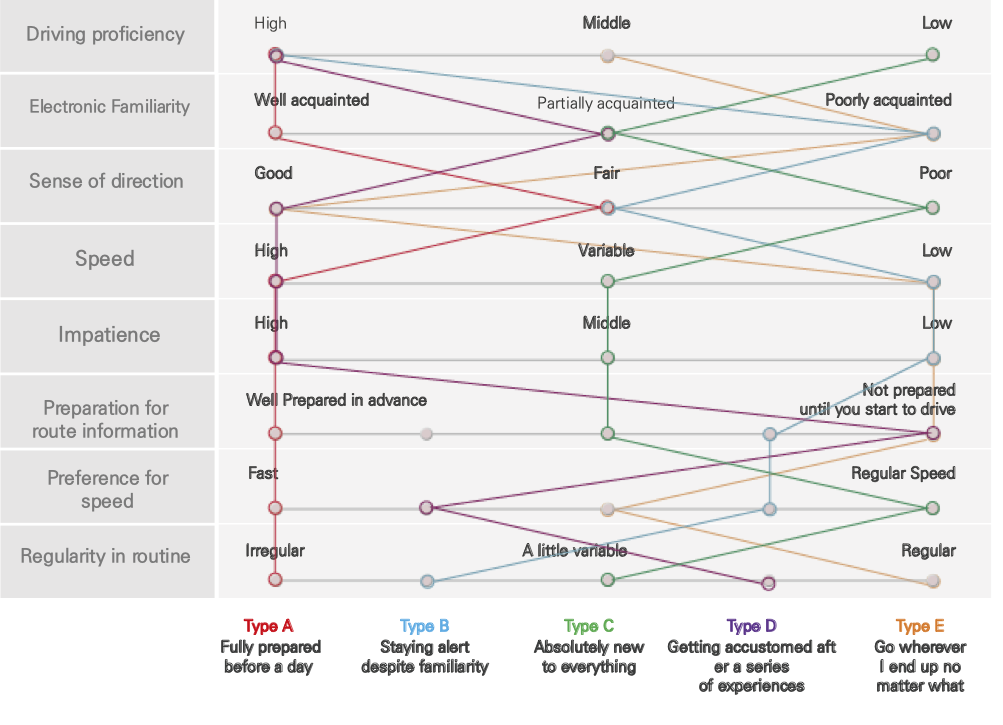
User Test & FGI
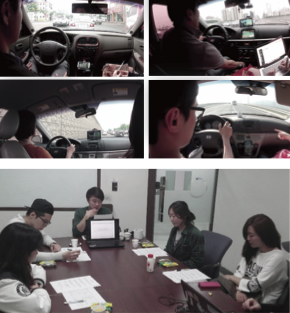
Analysis
We listed up the factual issues from a record of all kinds of research. These could be the words that were mentioned in the interview and description about unconscious behaviors of drivers captured from UT. And then, we put a mark on important issues and grouped them by similar topics using Excel filter, so we could deduct the core issues synthesized.


Design Directions
1.
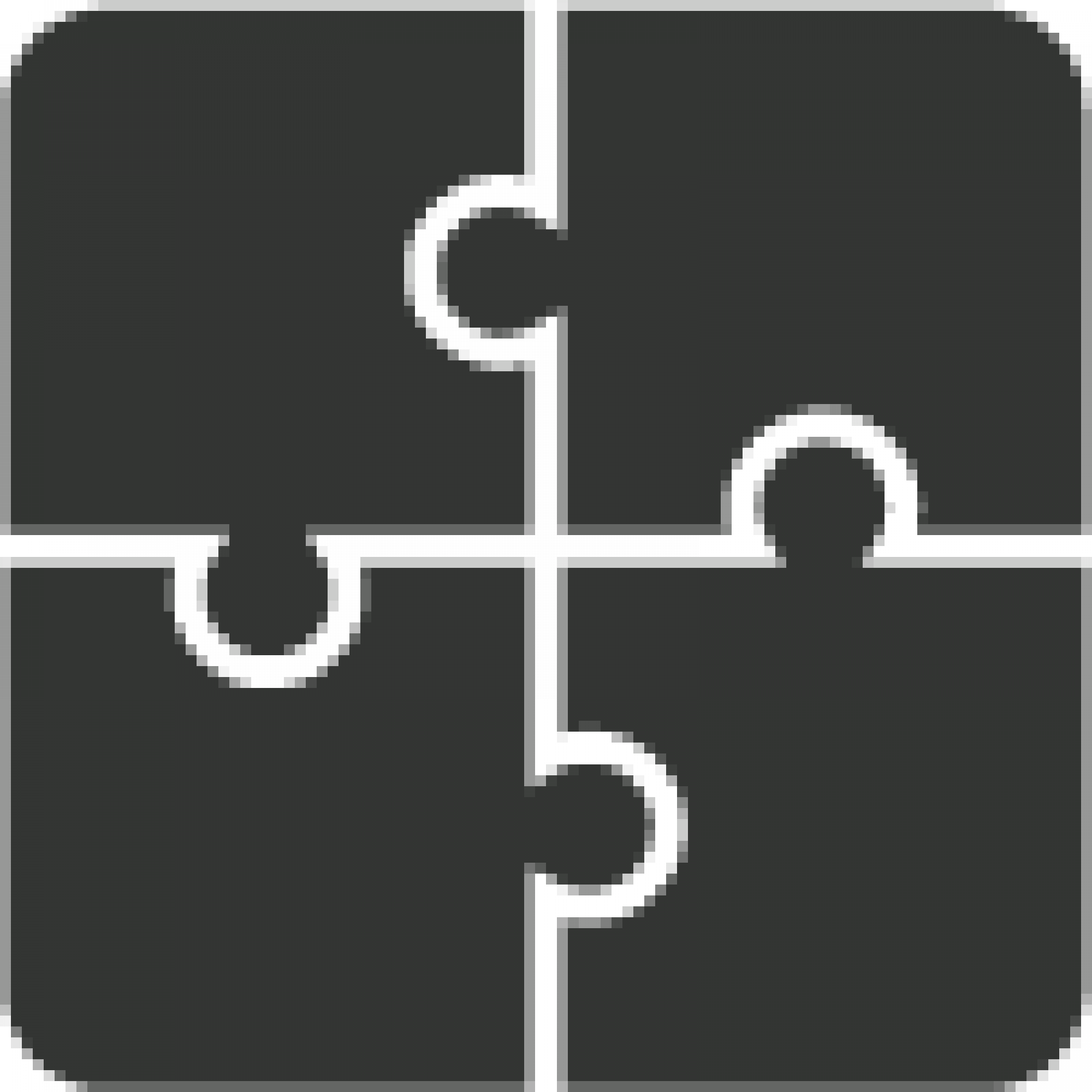
A function to search for routes with fragmentary clues
2.

Moderate compromise between location information that a driver has and address needed for navigation with fragmentary clues
3.

Function to allow drivers to make active decisions in line with the user’s concerns regarding path selection
4.

Diversity in choices of directions for segmented driving conditions
5.

Redesign for UI Structure and interaction in line with driving contexts or needs
Solutions & Scenarios
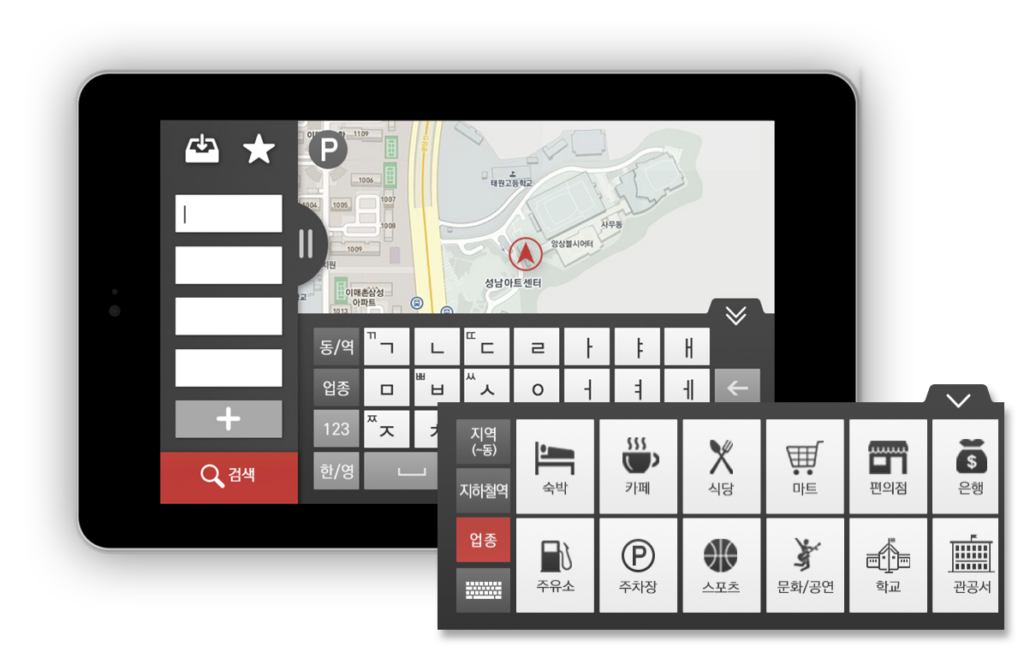
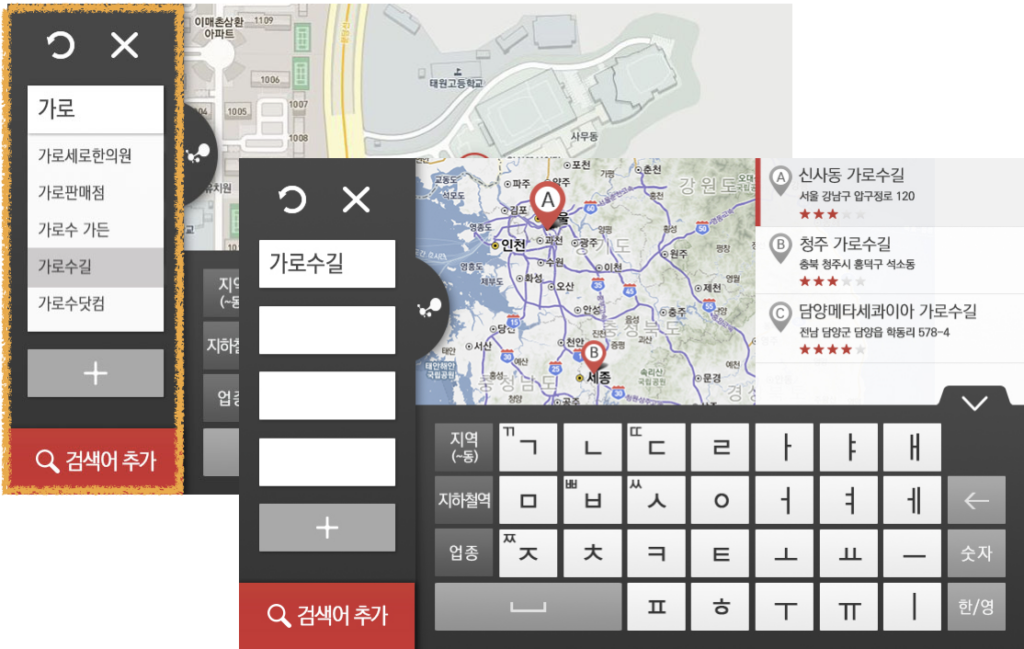
Scenario 1
Using Fragmentary Clues in Searching for a Destination
I want to go to the cafe I saw while passing by Garosu-gil(가로수길) a while ago, but I can’t remember the exact name. Let me try to find it using the clue search menu.
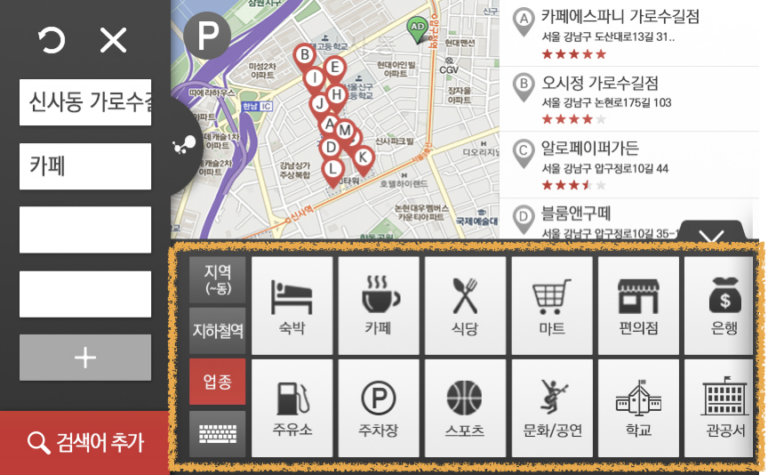
Entering ‘Garosu-gil’ in the first search box, I can touch ‘cafe’ through the industry icon in the second one.
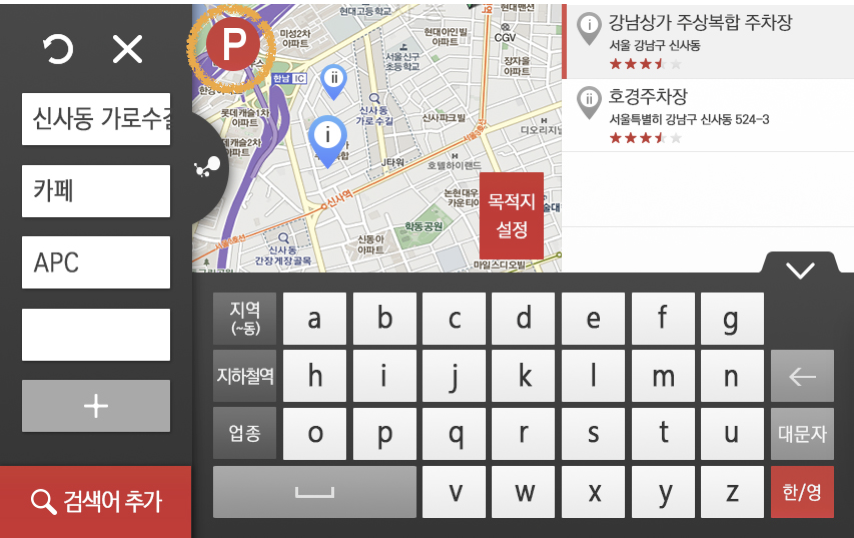
Since parking is difficult due to the complicated path, press the parking button to go directly to the parking lot, and select a nearby parking lot.
Scenario 2
Directly Deliver Direction Information from External Device
Asking a friend for the direction of a meeting place through social media, easily set a destination by sending text-formed address to navigation device using Bluetooth
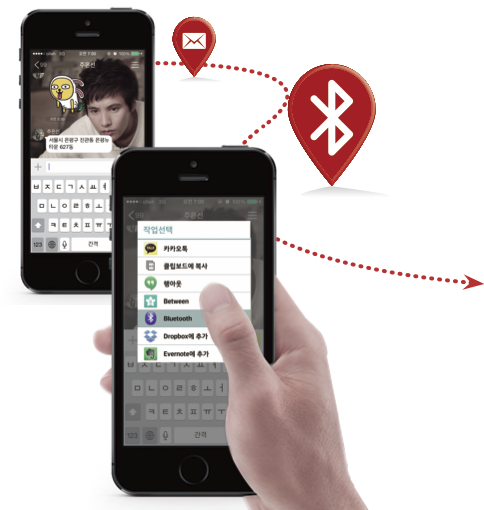

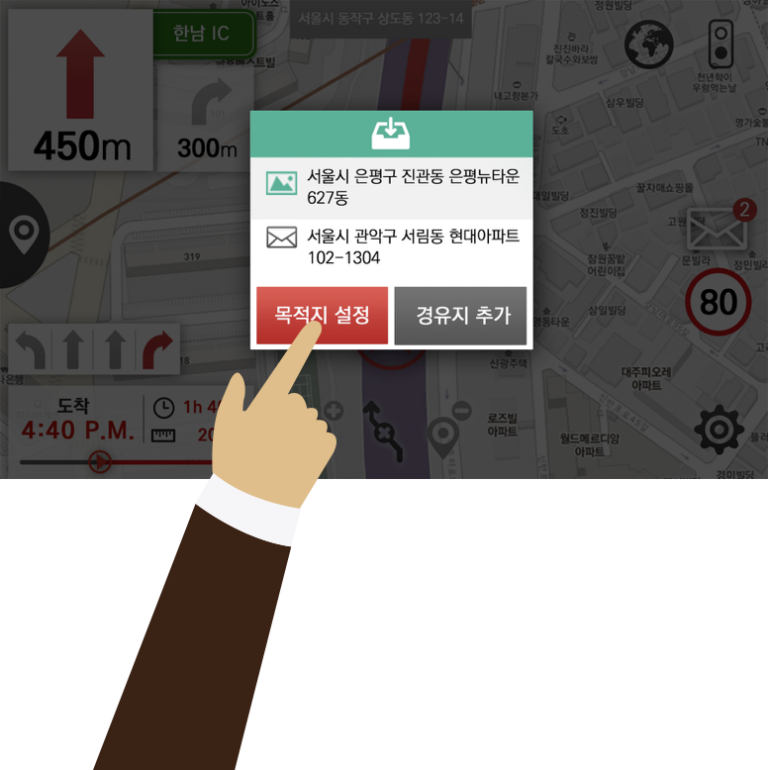
Scenario 3
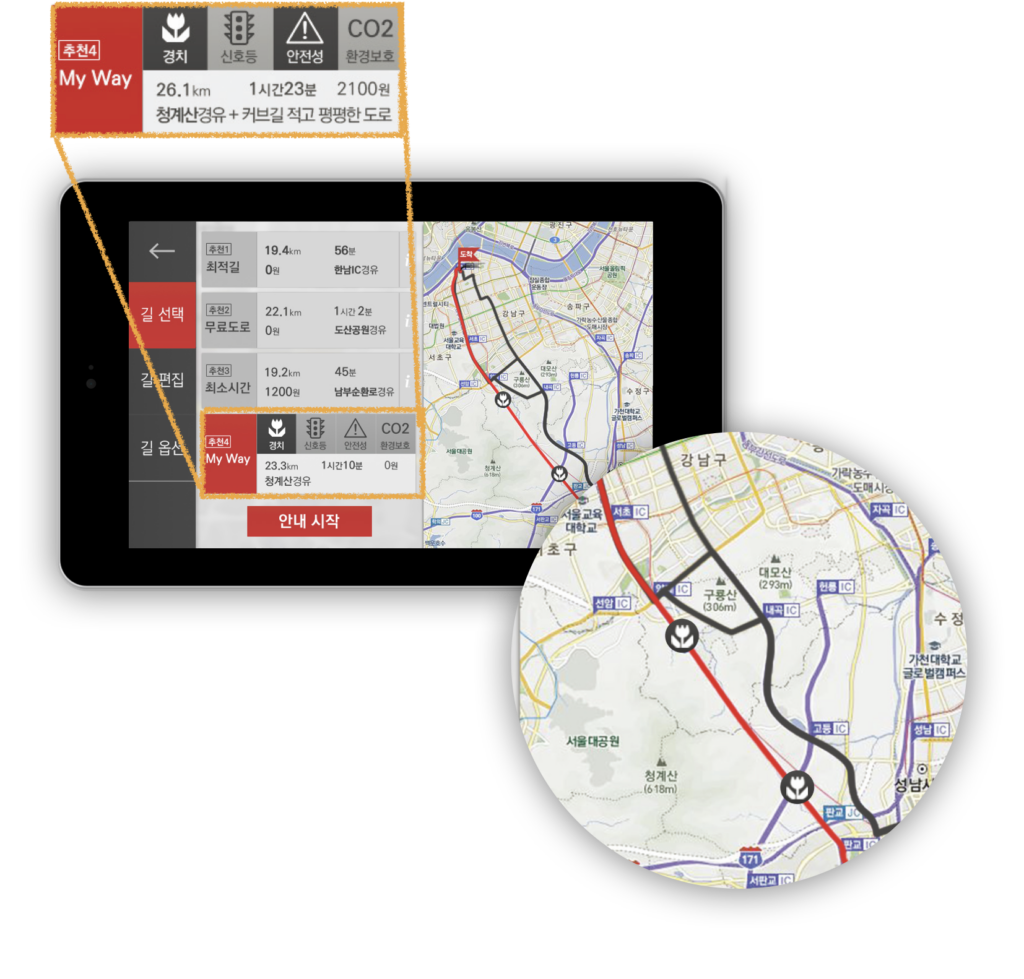
Autonomous Route Taking advantage of a Route Choice Option
When I want to enjoy colorful fall leaves on the way to the destination, the scenery button recommends indirect routes to enjoy it.
